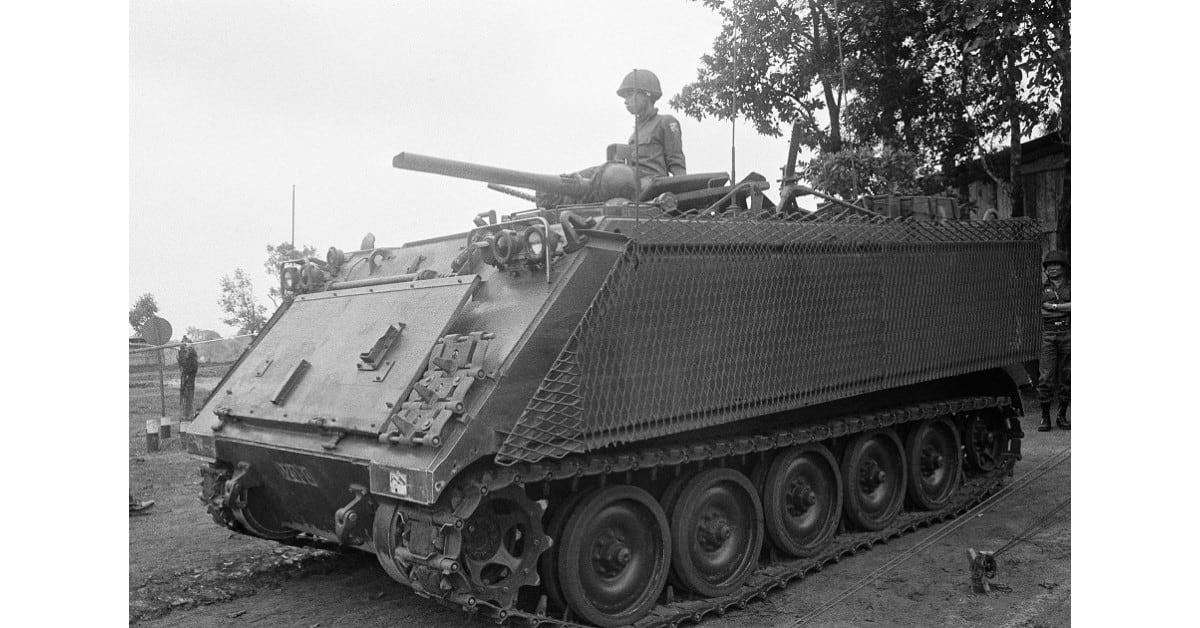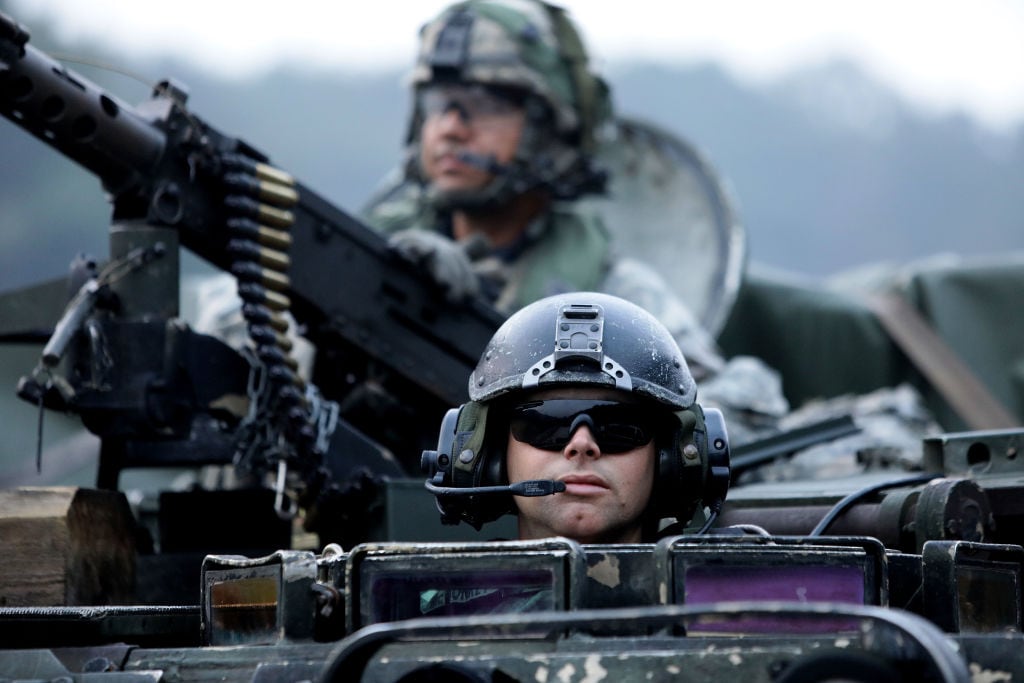A group of troops atop an M113 is one of the iconic images of the Vietnam War. The M113 armored personnel carrier, second only to the UH-1 Iroquois “Huey” helicopter in battlefield importance, entered production in April 1960. Developed by FMC, the aluminum-hulled M113, intended to be amphibious and air transportable, was considerably lighter than its predecessor, the M59.
Unfortunately, its limited freeboard (distance from the water line to the roof) of 14 inches precluded use in amphibious operations. But the M113 could cross rivers with slow currents, relying on its hydraulically tensioned tracks for propulsion.
Initially propelled by a 260 horsepower Chrysler 75M V-8 gasoline engine, the M113 was soon eclipsed by the diesel-powered M113A1, introduced in April 1963. By July 1, 1968, many M113s in Vietnam were diesel-powered.
The M113A1 was configured for a two-man crew — a commander/gunner and driver — and 11 other soldiers. It included a hydraulically operated rear ramp for rapid exit. The ramp also had a hatch for access when it was up. The driver had four M17 periscopes, and his hatch could mount an M19 infrared periscope for night movements.
Read more from HistoryNet:
- Silent Warrior: Grumman’s OV-1 Mohawk
- Arsenal | F-104C Starfighter
- Case of the Mysterious Lob Bomb
- Amerika Bombers

Combat experience led the troops to alter many standard features. Units removed the track shrouds and mud flaps to make track repairs faster. They also took out the commander’s and driver’s seats, placing C-ration crates in their cupolas for seating. They added extensions to the driver’s steering levers so he could operate from atop the vehicle. And they replaced the troops’ compartment seats with wooden benches and stored ammunition underneath them.
Other enhancements included protective steel plates welded to the commander’s cupola or the .50-caliber M2 machine gun mount. Additionally, most units mounted one or two M60 machine guns next to the roof cargo hatch. Over time, the improvised armor protecting the machine gunners evolved into rotating gun shields providing all-around protection. They were standard equipment by 1970, designated as armored cavalry assault vehicle kits.
Largely replaced by the M2 Bradley infantry fighting vehicle in the 1980s, the M113A1 and related variants continue to serve with America’s allies and military partners.
Crew: 2
Other troops: 11
Engine: Detroit Diesel 212 shaft horsepower, V-6
Weight: 24,080 pounds Length: 15 feet, 11½ inches
Height: 8 feet, 2¼ inches Top speed (road): 40 mph
Top speed (water): 4 mph
Range: 476 kilometers (300 miles)
Armament: M2 .50-caliber heavy machine gun (standard); one or two M60 7.62 mm machine guns (added)
This article was originally published in Vietnam Magazine, a Military Times sister publication. For more information on Vietnam Magazine and all of the HistoryNet publications visit historynet.com.





